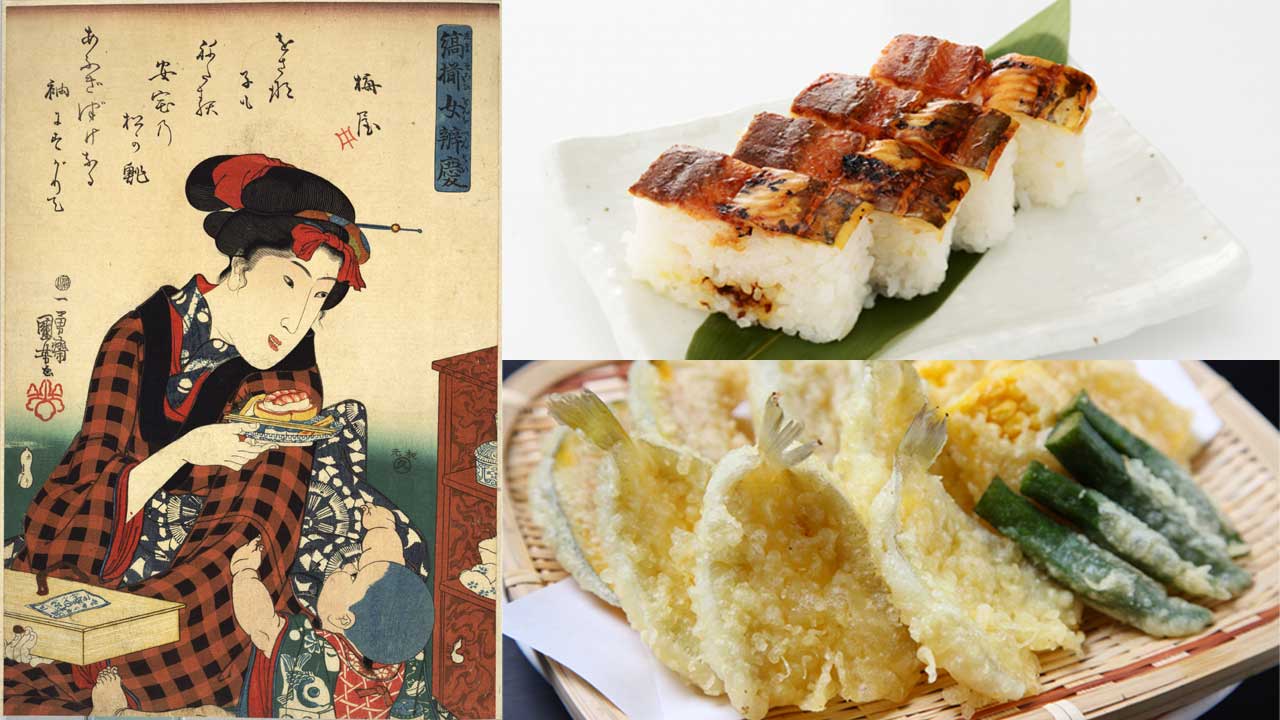
Japanese Print Exhibition Highlights the Enduring Influence of Ukiyo-e Artwork

Utagawa Kunisada (Toyokuni III). Untitled (Japanese Women Engaging in Woodblock Printing). 1857. Color woodblock print (nishiki-e). Each Sheet: 14 5/8 x 10 in. (37.2 x 25.4 cm). Full Object: 14 5/8 x 30 ¼ in. (37.2 x 76.8 cm). Hammer Museum, Los Angeles. UCLA Grunwald Center for the Graphic Arts, Acquisition
Japan is renowned for its printmaking. Frequently, when we envision its printed works, they are—or draw inspiration from—ukiyo-e, or “pictures of the floating world”: the hallmark artistic genre that emerged during the Edo period (1603–1868). Ukiyo-e provides us a glimpse into the history and culture of the nation during this era. Currently, an exhibition at the Hammer Museum in Los Angeles showcases its collection of Japanese woodblock prints from the Grunwald Center for the Graphic Arts. Titled Rising Sun, Falling Rain, the exhibition offers a comprehensive examination of the progression of ukiyo-e printmaking and the shin-hanga movement, which revitalized traditional ukiyo-e in early 20th-century Japan.
The Edo period was marked by considerable cultural change. It followed the Sengoku period, a time marked by civil wars and societal turmoil during the 15th and 16th centuries. In contrast, the Edo period experienced extended peace and stability, along with urban development and economic prosperity. A more affluent urban population had both the means and leisure to indulge in mass culture. This quest was known as seeking the floating world, where fashion, entertainment, and aesthetics converge.
From their beginnings, ukiyo-e prints focused on the urban experiences that many individuals pursued in “licensed pleasure quarters” such as kabuki theaters, teahouses, and brothels. Over time, as culture evolved, the subject matter broadened, propelled by an increase in domestic travel, especially to destinations like the Ise Grand Shrine and the peak of Mount Fuji. Government censorship and interactions with Western art also influenced later ukiyo-e themes. Nature, literature, and folklore became favored topics.
Rising Sun, Falling Rain includes more than 80 prints selected from the Grunwald Center for the Graphic Arts, which is affiliated with UCLA. In this extensive exhibition, you will observe how the genre advanced and refined its technical and aesthetic characteristics, illuminating why ukiyo-e has been, and remains, a cultural powerhouse in Japan and beyond.
Following a recent visit to the Hammer Museum, Eugene Kim, co-founder and editor-in-chief of My Model Met, remarked, “I viewed these Japanese woodblock prints firsthand and immediately realized that we had to feature them on My Modern Met. There is an abundance of beauty, history, and craftsmanship in these significant works.”
Rising Sun, Falling Rain is currently on display at the Hammer Museum until November 30, 2025.
An exhibition at the Hammer Museum in Los Angeles showcases its collection of Japanese woodblock prints from the Grunwald Center for the Graphic Arts.
Ishikawa Toyonobu. Actors Onoe Kikugorō I and Nakamura Kiyosaburō I Playing a Samisen Together. Circa 1749-1752. Woodblock print (benizuri-e); ink and limited color on paper. Sheet: 17 3/8 x 12 3/16 in. (44.1 x 31 cm). Hammer Museum, Los Angeles. UCLA Grunwald Center for the Graphic Arts, Acquisition
Katsushika Hokusai. Viewing Sunset over Ryōgoku Bridge from the Onmaya Embankment, from the series Thirty-Six Views of Mount Fuji. 1831-1833. Color woodblock print (nishiki-e). Sheet: 9 7/8 x 14 7/8 in. (25.1 x 37.8 cm). Hammer Museum, Los Angeles. UCLA Grunwald Center for the Graphic Arts, Acquired from the Frank Lloyd Wright Collection, 1965
The exhibition is named Rising Sun, Falling Rain.
Utagawa Hiroshige. Fireworks at Ryōgoku Bridge, Number 98. 1858. Color woodblock print (nishiki-e). Sheet: 14 1/16 x 13 ¼ in. (35.7 x 33.7 cm). Hammer Museum, Los Angeles. UCLA Grunwald Center for the Graphic Arts, Acquired from the Frank Lloyd Wright Collection, 1965
Utagawa Hiroshige, ”Yoro Waterfall in Mino Province, Number 23,” 1853–58. Color woodblock print. Sheet: 14 3/